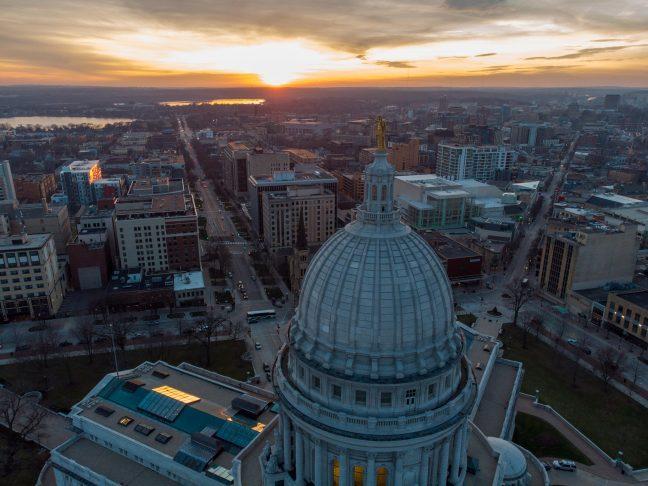Gov. Tony Evers has long been critical of the district map-drawing process in Wisconsin.
He has called the state’s maps “gerrymandering 2.0” and said they unfairly favor the current Republican majority in the state legislature, according to AP News. But on March 3, the Wisconsin Supreme Court accepted the governor’s updated map by a narrow majority.
The map won by a slim 4-3 vote, but it would likely not affect the political makeup of the state government much, according to Wisconsin Public Radio. Currently, there are 61 Republicans and 38 Democrats in the state assembly, and Republicans hold a 21-12 majority in the Senate, according to Wisconsin State Legislature.
Based on a projection from the governor’s office, Evers’ maps would elect six more Democrats in the Assembly and one in the Senate, according to the Associated Press. The number of congressional seats held by each party is also not expected to change.
That’s because in 2021, the Wisconsin Supreme Court said it would favor maps with the fewest changes to the maps that were adopted by the majority Republican Legislature in 2011.
No other court has made such a decision, University of Wisconsin political science professor David Canon said.
“Even the map Gov. Evers came up with still has a significant Republican lean, something that won’t change unless there is quite a landslide,” Canon said.
Since districts are redrawn every 10 years, Wisconsin’s current maps are from 2011. Evers’ maps reduce the impact of gerrymandering to an extent, but because of the court’s least-change constraint, they couldn’t do much more, UW Law School associate professor Robert Yablon said in an email to The Badger Herald.
While the new map maintains the Republican’s advantage, it is being contested by Republicans in the state Legislature, according to Wisconsin Public Radio.
March 7, only four days after the Wisconsin Supreme Court confirmed the updated map, the majority Republican legislature and the Wisconsin Institute for Law and Liberty, a conservative law firm, filed a joint appeal to the United States Supreme Court to block the decision.
“Although Republicans continue to have an electoral edge under the governor’s maps, their position isn’t quite as secure as it would have been under their preferred maps,” Yablon said. “The Republicans might have hoped that their state legislative maps would give them a chance to win a veto-proof super-majority, which is less likely under the governor’s maps.”
Though the Republicans maintain their majority, their position is more fragile than it was before, Yablon said. Evers drew seven majority-Black districts in Milwaukee on the new map, one more than the current map has, according to Wisconsin Public Radio.
Wisconsin Supreme Court rules against taking voters off rolls in anticipated decision
The legislature and WILL claim that the districts were drawn based on race, according to their appeal to the U.S. Supreme Court. Accordingly, they argue the map violates the U.S. Constitution’s equal protection clause.
“The U.S. Supreme Court turns away the vast majority of petitions it receives, but it wouldn’t shock me if the Court does choose to hear this case,” Yablon said.
It would be more surprising if the Supreme Court stopped the maps from being used in 2022 elections, due to the April 5 statewide election that effectively creates a deadline for the establishment of new maps, Yablon said.
Whatever course the U.S. Supreme Court takes depends on how radically they want to change the voting laws, Canon said. His expectations are low due to some recent Supreme Court decisions.
“They’ve already refused to hear [voting rights] cases in Pennsylvania and North Carolina, letting those decisions rest with the state courts,” Canon said.
UW School of Business committed to maintaining full-time MBA despite national decline
Justice Brian Hagedorn, who usually votes conservative, voted with the court’s three liberal judges to adopt the governor’s maps, according to the Cap Times.
Hagedorn has a record of breaking with the court’s conservative block on contentious election issues, according to AP News. For example, he supported Evers’ maps because they adhere to the “least changes” order.
“We said we would choose maps that minimize changes from current law and evaluate maps for compliance with state and federal law,” Hagedorn wrote in the majority opinion. “In so concluding, we rejected an approach that involved this court making significant policy decisions or weighing competing policy criteria.”


